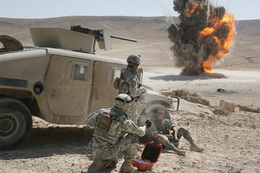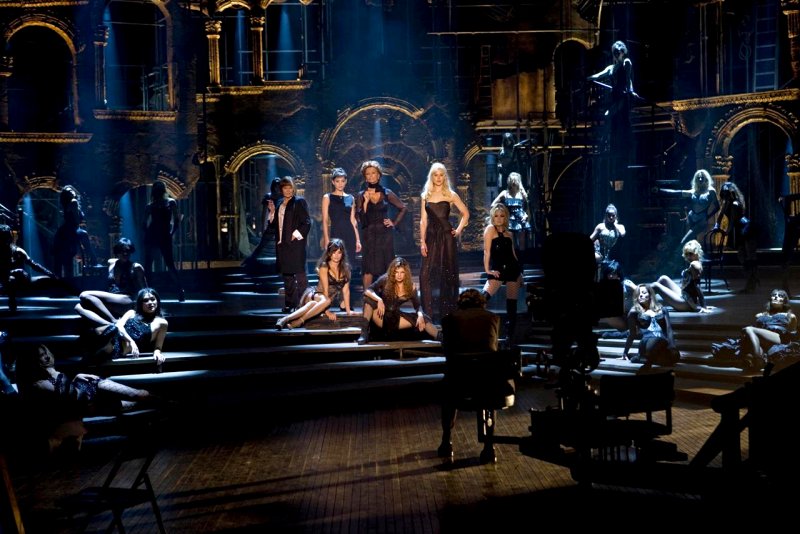The five finalists in the Feature Film category of the American Society of Cinematographers Outstanding Achievement Awards are: Barry Ackroyd for The Hurt Locker directed by Kathryn Bigelow
The gridlines are diagonal, making the viewer draw its attention to the actual explosion also how the car is positioned on a hill makes us draw towards the explosion even the the explosion was in the background, it is given the most attention.
Cinematographer Barry Ackroyd was born May 12, 1954 in Manchester. He has worked on many films and TV projects as a cinematographer.
Barry Ackroyd won the BAFTA Award for Best Cinematography for The Hurt Locker as well as the BSFC Award and the Austin Film Critics Association Award for the same catagory.
Cinematographer Barry Ackroyd was born May 12, 1954 in Manchester. He has worked on many films and TV projects as a cinematographer.
Barry Ackroyd won the BAFTA Award for Best Cinematography for The Hurt Locker as well as the BSFC Award and the Austin Film Critics Association Award for the same catagory.
Dion Beebe for Nine directed by Rob Marshall
The lighting was really important in this photo. It shows who is more improtant in the scene or who should the audience should focus on. The different type of lighting shows this. We also see the people in bright lighting are position in the frame, the are at the centre of the frame where the people in dim lighting are around them. This takes the viewers attention to the girls in bright lighting.
Dion Beebe is an Australian cinematographer born in 1968. Dion studied cinematography at the Australian Film Television and Radio School from 1987 to 1989
Dion Beebe is an Australian cinematographer born in 1968. Dion studied cinematography at the Australian Film Television and Radio School from 1987 to 1989
Christian Berger for The White Ribbon directed by Michael Haneke
The type of lighting makes the viewer has his attention of the burning house because thats the only source of light there is while everything else is dark.
Christian Berger is an Austrian cinematographer born in January 13, 1945.
Berger was nominated for an Academy Award for Best Cinematography for his work on The White Ribbon at the 82nd Academy Awards. He was the surprise winner at the ASC Awards for Best Cinematography in 2010.
Berger invented the Cine Reflect Lighting System which he used on his latest films. Besides his work as director of photography he also teaches cinematography at the Filmacademy Vienna.
The person is in two thirds of the frame which draws our attention. Which helps us do this aswell is that this character is in focus while the background is blured out. Mauro Fiore is an Oscar winning cinematographer born in 1964.He was born in Marzi, Calabria, Italy and moved to the US with his family in 1971. He is most notable for his work in the 2009 film Avatar for which he won the Academy Award for Best Cinematography at the 82nd Academy Awards, making Avatar the first film completely shot in HD to win such award.




